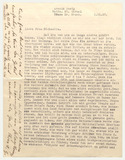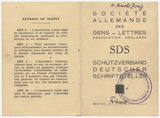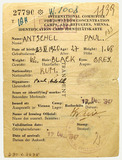Arnold Schönberg: self-portrait, watercolour, 1935
Autumn 1935 was a very trying time for Arnold Schönberg both privately and professionally: financial worries, bureaucratic irritations and poor health exacted their toll. A concert in Los Angeles arranged by director Otto Klemperer that Schönberg was able to direct and which was dedicated exclusively to his music, seemed to offer some hope.
Arnold Schönberg: Song of the Wood-Dove, audio recording (1934)
In the first few months after arriving in the USA, composer Arnold Schönberg was often completely exhausted as he had numerous tasks to perform: He taught pupils in New York and Boston, was invited to conduct concerts and composed. The conductor Otto Klemperer, who Schönberg much admired, and who had emigrated to the USA before him, had prepared several contacts.
Arnold Schönberg: Violin concerto op. 36 (1936)
The Violin Concerto Op. 36 is the first large composition that Arnold Schönberg completed in exile in the USA.
Arnold Zweig (documentary film, GDR 1962, excerpt)
Documentary film directed by Joop HuiskenDirected by Joop Huisken and with a screenplay by Renate Drescher, the documentary film Arnold Zweig was released in 1962. Viewers were presented with the most significant events in the life of the writer Arnold Zweig and his artistic oeuvre.
Arnold Zweig in Haifa
Barely two years after his emigration to Palestine, the author Arnold Zweig penned these harsh words criticizing his new homeland in a letter to Sigmund Freud. Writing in 1936, the formerly staunch Zionist could now barely contain his disappointment.
Arnold Zweig: Insulted and Exiled: The Truth about the German Jews 1933, manuscript (1933)
(Bilanz der deutschen Judenheit)In spring 1933 Arnold Zweig wrote down the first ideas and outlines of a book that he intended to take stock of German-Jewish relations. In face of the Jews’ dramatic situation in Germany, Zweig wished that his work would meet with more interest abroad.
Arnold Zweig: Letter to Hedwig Michaelis (1 November 1935)
In 1934 and 1935, Arnold Zweig and his wife Beatrice exchanged letters with Hedwig Michaelis in New York, the wife of the chemist Leonor Michaelis, on several occasions. The families had probably met in 1933 in Sanary-sur-Mer through Marta and Lion Feuchtwanger.
Arnold Zweig's membership card of the Association of German Writers (Paris 1936)
From 1929 to 1930, the author Arnold Zweig was the first chairman of the Schutzverband Deutscher Schriftsteller (SDS) [Association of German Writers]. The association, which was originally founded as a writers' trade union, had around 2,000 members in the 1920s, among them renowned authors such as Thomas Mann.
Arthur Kaufmann: The Intellectual Emigration (Die geistige Emigration), painting (1938-1964)
When one looks at the painting The Intellectual Emigration by Arthur Kaufmann, one notices the accurately painted faces that dominate the work. In the left section of the painting, which with its swastika visibly symbolises Germany, one sees a stream of people without recognisable facial features.
Austrian identity card of Paul Celan (1947)
Flight from Soviet occupationAfter several failed attempts to flee Stalinist Romania, at the end of November 1947 the author Paul Celan managed to reach Vienna after crossing the Romanian-Hungarian border on foot. On the day of his arrival at the Rothschild refugee camp, he was issued with this identity card under his birth name Antschel.


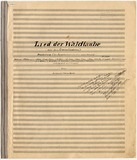

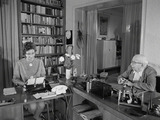
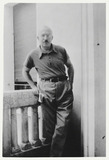
![Manuscript: Arnold Zweig, Bilanz der deutschen Juden[heit] 1933 Manuscript: Arnold Zweig, Bilanz der deutschen Juden[heit] 1933](/KIE/Content/EN/Images/objects/zweig-arnold-bilanz-manuskript-en.jpg?__blob=thumbnail&v=5)
